Just over two decades ago, sequencing the human genome took more than ten years and cost millions of euros. Today, thanks to Next-Generation Sequencing (NGS), the same process can be completed in days and at a fraction of the cost.
This evolution is not just technological: it’s deeply clinical. NGS is enabling faster, more accurate diagnoses in areas such as oncology, rare diseases, and infectious diseases, paving the way for personalized treatments and better-informed medical decisions. Discover how this technology works and how it can benefit your organization.
What is Next-Generation Sequencing?
Next-Generation Sequencing (NGS) is a powerful technology that enables the rapid, simultaneous, and highly accurate analysis of DNA and RNA. Unlike traditional methods that read one genetic sequence at a time, NGS processes millions of fragments in parallel, dramatically increasing the speed and volume of information gathered from a single analysis.
What is NGS used for?
NGS detects genetic alterations with remarkable precision, even when they are present in minimal quantities. This makes it especially useful for limited or heterogeneous samples, such as tumor tissues or blood. These are some of the key benefits of NGS for hospitals, laboratories, and research centers:
1. Oncology Genetic Testing
NGS can identify specific genetic mutations associated with various cancers, such as BRCA1 and BRCA2 in breast and ovarian cancers, helping to confirm diagnoses and guide therapeutic decisions.
2. Advanced Neonatal Diagnosis
NGS can detect rare genetic diseases in newborns even before symptoms appear. This allows for early treatment and helps prevent severe complications, improving long-term quality of life.
3. Diagnosis of Rare and Hereditary Diseases
In patients with non-specific symptoms or a suggestive family history, NGS can be critical for identifying a genetic cause. In many cases, it is the only reliable path to a clear diagnosis.
4. Infectious Agent Identification
When conventional tests fail, NGS can identify viral, bacterial, or fungal genetic material directly from the sample, essential for complex infections, such as in immunocompromised patients or hospital-acquired infections.
5. Personalized Medicine and Pharmacogenomics
NGS can assess how a patient’s body may respond to specific drugs, helping clinicians choose the most effective treatment with fewer side effects, an important step toward truly personalized therapy.
6. Improved Efficiency
By consolidating multiple tests into a single procedure, NGS reduces the need for repeated analyses, streamlining laboratory workflows and saving time and resources.
7. Better Outcomes, Better Care
Faster, more accurate diagnoses lead to timely treatment, shorter hospital stays, and fewer unnecessary appointments, ultimately improving patient satisfaction and institutional performance.
8. Controlled Costs
Targeted and personalized care reduces the risk of ineffective treatments, misdiagnoses, and wasted resources, resulting in better cost management across the entire care pathway.
9. More Data, More Knowledge
The ability to generate large volumes of genomic data enables collaboration with research centers and the development of innovative projects.
Types of NGS
NGS includes several approaches, depending on the intended application. Here are the main methods:
1. Whole Genome Sequencing (WGS)
Reads the entire genetic material (both coding and non-coding regions). It’s ideal for identifying rare mutations, studying complex diseases, and gaining a broad view of the genome. It’s the most comprehensive method, but also the most but also the most demanding in terms of time and resources.
2. Whole Exome Sequencing (WES)
Focuses on the coding regions of DNA (around 1–2% of the genome), where most clinically relevant mutations occur. It’s faster and more cost-effective than WGS and commonly used in diagnosing genetic diseases.
3. Targeted Sequencing
Analyzes specific genes or regions of interest. Ideal for investigating known mutations, such as BRCA1/BRCA2, offering high read depth and fast turnaround.
4. RNA Sequencing (RNA-Seq)
Enables analysis of which genes are active and to what extent they are expressed at a specific point in time. Widely used in oncology to study expression profiles in tumors or in response to therapies.
5. Metagenomic Sequencing
Directly sequences genetic material from clinical or environmental samples (e.g., stool or secretions), allowing the identification of microorganisms without culture. Useful in microbiology, infectious disease, and public health.
How NGS Works
Despite variations in platforms and technology, the NGS process follows several key steps to convert a DNA or RNA sample into usable genetic data:
- Sample Extraction and Preparation
Genetic material (DNA or RNA) is extracted from blood, tissue, saliva, etc., then fragmented and tagged with adaptors to prepare for sequencing. - Amplification
The fragments are amplified (e.g., via PCR) to generate enough material for sequencing. Depending on the platform, this can occur on solid surfaces or within microdroplets. - Sequencing
The prepared fragments are read base by base using optical, chemical, or electrical signals, depending on the system. - Bioinformatics Analysis
Millions of short reads are aligned to a reference genome. Specialized software identifies mutations, variants, expression patterns, or microbial content, depending on the test.
Preparing Your Institution for NGS: What to Consider
Implementing NGS goes beyond acquiring the right equipment. It requires ensuring your entire organization is equipped to integrate the technology effectively and sustainably. Key considerations include:
Identify Clinical Priorities
Not all specialties benefit equally from NGS. Identify high-impact areas, such as oncology, neonatology, or rare diseases and define clear clinical referral criteria.
Review Workflows and Interdepartmental Processes
NGS demands collaboration between clinical teams, labs, genetics, and IT. Map out the sample journey, clarify responsibilities, and anticipate bottlenecks for faster, higher-quality results.
Set Clear Testing Criteria
To avoid overuse and ensure proper utilization, implement clear protocols on when to request NGS testing, preventing redundant or inappropriate orders.
Build Genomic Literacy Across Teams
Doctors, nurses, technicians, and administrative staff should understand the basics of NGS: what it can detect and how to communicate results. Training is key to both interpretation and expectation management.
Assess IT and Data Storage Needs
NGS generates large volumes of sensitive data. Ensure your infrastructure can store, process, and protect this data in compliance with legal and privacy standards.
Establish Expert Support Points
From complex variant interpretation to clinical queries, having internal or external expert support can save time and prevent errors.
Advanced Diagnostic Solutions for High-Performance Laboratories
Choosing the right equipment makes all the difference: from turnaround time to diagnostic confidence. That’s why Quilaban provides solutions built for clinical and laboratory teams that demand more than just technical specifications: agility, precision, and reliability, even under pressure.
These systems are designed for modern healthcare institutions requiring innovative, efficient, and high-quality tools:
Stratys System*: Optical Genomic Mapping with Power and Flexibility
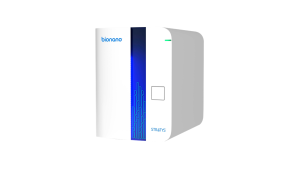
Detects structural variants that often go unnoticed in traditional approaches. Processes up to 260 samples per week in random-access mode. Ideal for labs that need both depth and speed.
oncoReveal™ Multi-Cancer with CNV and RNA Fusion Panel*
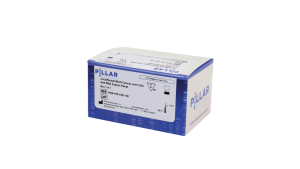
Combines DNA (with CNV) and RNA fusion panels for a comprehensive tumor analysis—especially suited to FFPE or frozen tissue samples.
TruSight Oncology 500 v2*
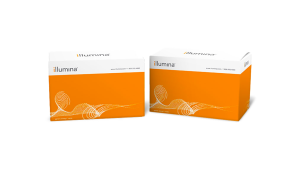
Covers 523 genes, MSI, TMB, and HRD with as little as 10 ng DNA or 20 ng RNA. Delivers full tumor molecular profiling in just 3–4 days with integrated clinical interpretation.
Illumina DNA Prep with Exome 2.5 Enrichment (S) Tagmentation*
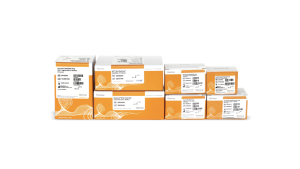
Reliable, fast exome library prep kit with updated coverage, built for efficient, high-throughput sequencing days.
NextSeq™ 550Dx Sequencing System*
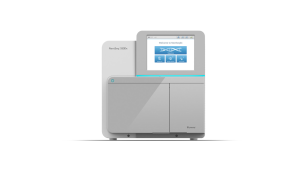
Versatile platform for both CE-IVD regulated tests (e.g., non-invasive prenatal testing) and RUO research. One system, multiple applications.
MiSeq i100 and i100 Plus*
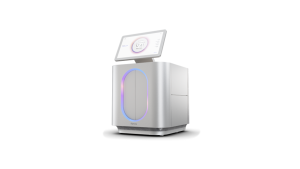
The MiSeq i100 and MiSeq i100 Plus use reagents that are shipped and stored at ambient temperature, reducing cold chain requirements and improving lab sustainability.
No maintenance needed after each run.
Get same-day results from a compact benchtop system with powerful DRAGEN analysis-built in.
Ideal for laboratories seeking rapid, reliable results with minimal hands-on time.
NGS: From Diagnosis to Clinical Decision
NGS is increasingly central to clinical diagnostics and research. But to truly leverage its potential, you need more than machines: you need reliable solutions, technical knowledge, and expert support.
At Quilaban, we prioritize integration. Alongside a wide range of products for high-throughput institutions, we offer something not always found in a catalog: scientific support, tailored training, and continuous guidance to help professionals turn genomic data into actionable clinical decisions.
Whether in prenatal screening, oncology, or rare disease diagnosis, our goal remains the same: help earlier, with more certainty and fewer doubts.
Considering NGS for your institution? Explore what you can achieve with the right technologies, services, and expert support. Contact us today and ensure your institution’s genetic diagnostics meet the highest international standards.
The NextSeq 550Dx Sequencing System is an in vitro diagnostic medical device intended for professional use only. Please read carefully the information contained in the labelling and user manual for details, warnings, and precautions related to the use of the devices. The oncoReveal, Stratys, TruSight Oncology 500 v2, Illumina DNA Prep with Exome 2.5 Enrichment, (S) Tagmentation, and MiSeq i100 Plus Sequencing System are intended for research use only.
